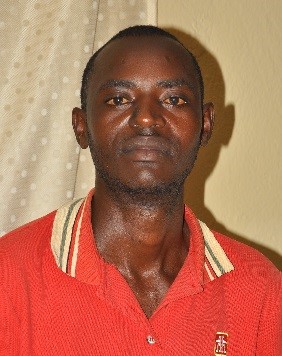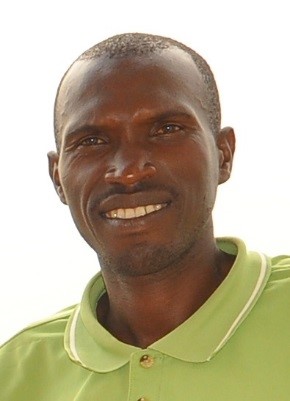Posts Tagged rwandan genocide
26 June Campaign: How two survivors of Rwandan Genocide overcame the scars of the past
Posted by World Without Torture in 26 June on 11/06/2015
It is time to put a face to torture victims and reclaim their need for and right to rehabilitation – a right guaranteed under the UN Convention against Torture. As part of this year’s 26 June campaign, we are sharing the stories of survivors and care providers to show how providing rehabilitation services to torture survivors is a right and responsibility for all.
In 2014 the IRCT published the stories of ten women who experienced sexual violence and torture during the 100 days of the 1994 Rwandan Genocide. Today we are sharing the stories of two men who have worked with rehabilitation centres, Association for Research and Assistance for Africa Mission (ARAMA) and Uyisenga Ni Imanzi to rebuild their lives following the torture and trauma they endured during the genocide.
Bernard
“I was eight years old when the genocide happened. When my entire family was killed, a neighbor took care of me. I was wounded on my leg, and the scars did not heal. Throughout my school years, the wound would open all the time and suffered from infections. I could barely walk and although I am schooled in car-mechanics, I could not find a job. I did not feel like talking to anyone, and I was an outsider in my community. I had no friends and felt so lonely. I started to suffer from depression.
“A few years ago, I met ARAMA. ARAMA decided to help me and send me to the military hospital of Kanombe where my leg was operated on. They continued to be there for me and gave me medicines and therapeutic shoes. I can’t describe how it felt to walk without pain. They also gave me psychological and psychosocial support.
“Before I met ARAMA, I couldn’t sleep. I was afraid of the bad memories that always come at night when I sleep. Since last week, I started to sleep again and the nightmares are gone! Thanks to ARAMA, I don’t feel alone anymore, and I have started to talk to other people again. I feel so much better now.”
Emanuel Raduka
“The genocide made me an orphan. I was 18 years old and all of a sudden I became the head of the household, with three little brothers to take care of. I was not ready to become a parent. You need a lot of strength to become your brothers’ father. When the perpetrators took my father’s land, we were left with nothing. For a long time I was sad, hopeless and very angry about what happened.
“When Uyisenga Ni Imanzi came, they were the first to tell us that there was still hope for us. They gave us and other orphans counselling and taught us how to farm and grow maniocs and pineapples. Together with the other orphans we created a cooperation called ‘Duhozanye’. Being a member of the cooperation feels good, we have enough to eat and we can even save some money for the future. In ‘Duhozanye’ we talk a lot and can understand each other’s problems.
“We are not alone anymore. Uyisenge Ni Imanzi helped me and my brothers get our land back and they helped my brothers go back to school. My brothers now go to university. For us, Uyisenga Ni Imanzi got us out of the darkness and gave us hope for the future. They helped me chase away the sadness and the hatred. Sometimes, I lose my strength and then everything turns bad. But the staff at Uyisenga are like parents for me, and when these bad feelings come up, they are always there to give me hope again.”
Rwandan Genocide: Our campaign marking 20 years since the genocide comes to an end
Posted by World Without Torture in Rwanda: 20 years on on 17/07/2014
Over the past 100 days we have been marking one of the biggest, most damaging humanitarian atrocities in history – the 1994 Rwandan Genocide. Through the testimonies of ten brave women, we helped fulfil their goal — that their stories not only reach other women who are victims of rape but also the perpetrators.
They hoped that the men who have caused them and others so much pain may, through reading the stories, come to understand what their past actions have caused in terms of suffering among the women they violated.
In the space of 100 days over one-million civilians were tortured, raped and murdered in one of the largest examples of ethnic cleansing the world has ever seen as Hutus repeatedly and mercilessly attacked the Tutsi population following the death of Rwandan President Juvénal Habyarimana, himself a Hutu.
Yet while the genocide had far-reaching effects, some survivors did pull through, thanks in part to group therapy programmes established following the genocide.
For the latest edition of IRCT’s Torture Journal, the team worked with editors Annemiek Richters and Grace Kagoyire to collate ten stories from female survivors of the genocide, all of which are available in pdf and here on World Without Torture.
During the process of collecting the stories, and using their own words, the editors developed a deep connection with the authors of the stories. “We admire their courage to overcome their silence and share with us, and through us with many others, their deepest suffering and the steps they have taken on the road towards healing. Our hope is that they will continue to support each other and together face the continuing and new challenges in their lives.”
The stories, while painful to read at times, reflect not only on the horrors of the genocide but also the strength and hope of the survivors. And while many survivors of the genocide still require rehabilitation and assistance today, the testimonies are a powerful testament to the benefits of therapy.
To read all the survivor stories, click this link.
One Rwandan Genocide survivor tells how rehabilitation helped her overcome her torture
Posted by World Without Torture in Rwanda: 20 years on on 17/06/2014
In our latest survivor story marking the 100 day period of the Rwandan Genocide – which took place 20 years ago – Germaine Muhorakeye recalls the murder and violence she witnessed, how it forced her to cope through drug addiction, and how she ultimately overcame her demons.
You can read an extract of Germaine’s story “I can now take care of myself and no longer use drugs” below. To read her full story, click this link. And to read the stories of the other brave women featured in our campaign, click this link.
Germaine’s story
My name is Germaine Muhorakeye. I was born in 1971, in the Western Province. I now live in Bugesera District, where I moved shortly after the genocide. My mother was a housewife and my father an agriculturalist.
My father died when I was still young, but his pension allowance continued to help my mother to raise us. We were seven children in my family; three sisters and four brothers. We lived among cows and coffee and banana plantations. Our grandfather also supported our mother. My good memories from before the genocide, when I was still young, are of family meetings and sharing New Year parties at our house. We used to share good meals, cook, and prepare the drinks for New Year parties together.
These were my happiest moments, which I will never have back.
I got married in 1992, but my husband was killed during the genocide, after only two years of marriage. Among my siblings who were in Rwanda during the genocide, I am the only one who survived. Almost all of my family members were killed during the genocide, and I myself was abused.
To read Germaine’s full story, click this link (opens as PDF)
To view the full list of stories, which will be updated every two weeks from April until July, please click this link.
“Being patient provided peace”: One female survivor of the Rwandan Genocide tells her story
Posted by World Without Torture in Rwanda: 20 years on on 12/06/2014
In our latest survivor story marking the 100 day period of the Rwandan Genocide – which took place 20 years ago – Ntakwasa Veneranda tells her story of escaping torture in her hometown and the struggles she faced when bringing perpetrators to justice.
You can read an extract of Ntakwasa’s story “Being patient provides peace” below. To read her full story, click this link. And to read the stories of the other brave women featured in our campaign, click this link.
Ntakwasa’s story
When I was still young, my parents used to tell us how our family had been deported by the government from Ruhengeri to Nyamata in 1959, when massacres based on ethnic conflicts happened for the first time in Rwanda. My father also told us that the whole region of Bugesera had been a forest and that there were many animals there.
Most of my relatives who had been forced into the forest by the government at that time died due to a sleeping sickness caused by tsetse flies. In 1965, six years after my family had been displaced and forced to live in what is currently known as Bugesera District, I was born.
 The hardships that Tutsis faced when they were first brought to Bugesera continued. When I was only eight years old I observed it with my own eyes. In 1973, as we were coming home from school, I saw people burning houses on the side of Gitarama.
The hardships that Tutsis faced when they were first brought to Bugesera continued. When I was only eight years old I observed it with my own eyes. In 1973, as we were coming home from school, I saw people burning houses on the side of Gitarama.
I have good memories of the period before the genocide, being with my parents and siblings. My life changed during the 1994 genocide, during which I saw many people die. My parents and seven of my siblings were killed in that time. In the period following the genocide, I sometimes felt very lonely because I had no one to talk to. The genocide took my peers and neighbours. No one from my extended family escaped.
On April 6, on the night of the death of President Habyarimana, we observed some of our Hutu neighbours change their behaviour.
That same night, they started burning Tutsi houses. Our father, who was an old man, told us that our lives were finished. We did not
know what he meant by this. Over the next few days he ordered us to spend the nights in the bush and come back home in the morning. After only two days, young Interahamwe started slashing the cows of Tutsis with knives and machetes and eating them, and beating up Tutsis. On the other side of our sector, houses were burning.
On the morning of April 8, we saw crowds of Interahamwe led by an ADEPR pastor, approaching our neighbourhood. We ran away towards Ntarama, because there were many Tutsis living there compared to other parts of Bugesera. On the way to Ntarama, we jumped over dead bodies of people who had been killed. I separated from my siblings and parents on that day as I was trying to find a place to hide and save myself.
To read Ntakwasa’s full story, click this link (opens as PDF)







 Our most popular blog series this month has been our new
Our most popular blog series this month has been our new 






